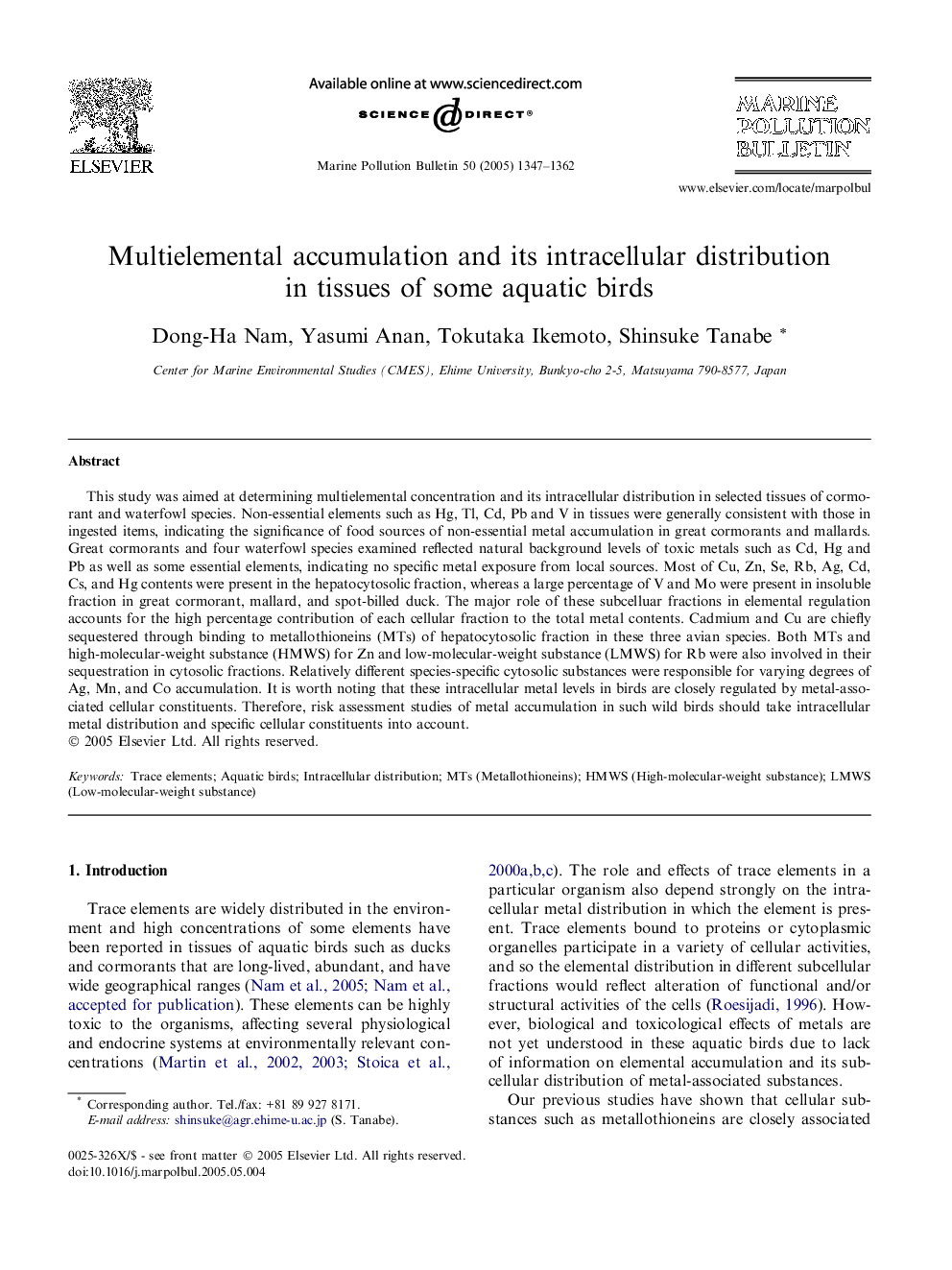| Article ID | Journal | Published Year | Pages | File Type |
|---|---|---|---|---|
| 9466006 | Marine Pollution Bulletin | 2005 | 16 Pages |
Abstract
This study was aimed at determining multielemental concentration and its intracellular distribution in selected tissues of cormorant and waterfowl species. Non-essential elements such as Hg, Tl, Cd, Pb and V in tissues were generally consistent with those in ingested items, indicating the significance of food sources of non-essential metal accumulation in great cormorants and mallards. Great cormorants and four waterfowl species examined reflected natural background levels of toxic metals such as Cd, Hg and Pb as well as some essential elements, indicating no specific metal exposure from local sources. Most of Cu, Zn, Se, Rb, Ag, Cd, Cs, and Hg contents were present in the hepatocytosolic fraction, whereas a large percentage of V and Mo were present in insoluble fraction in great cormorant, mallard, and spot-billed duck. The major role of these subcelluar fractions in elemental regulation accounts for the high percentage contribution of each cellular fraction to the total metal contents. Cadmium and Cu are chiefly sequestered through binding to metallothioneins (MTs) of hepatocytosolic fraction in these three avian species. Both MTs and high-molecular-weight substance (HMWS) for Zn and low-molecular-weight substance (LMWS) for Rb were also involved in their sequestration in cytosolic fractions. Relatively different species-specific cytosolic substances were responsible for varying degrees of Ag, Mn, and Co accumulation. It is worth noting that these intracellular metal levels in birds are closely regulated by metal-associated cellular constituents. Therefore, risk assessment studies of metal accumulation in such wild birds should take intracellular metal distribution and specific cellular constituents into account.
Related Topics
Physical Sciences and Engineering
Earth and Planetary Sciences
Oceanography
Authors
Dong-Ha Nam, Yasumi Anan, Tokutaka Ikemoto, Shinsuke Tanabe,
